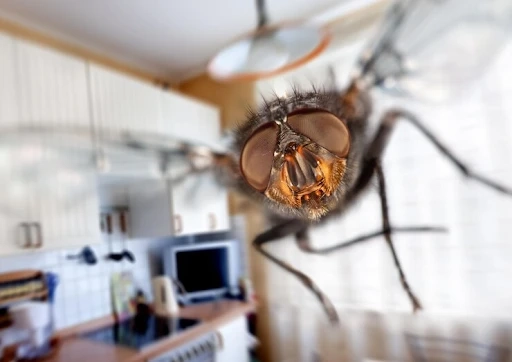Flies are a common nuisance in homes, especially during the warmer months. They buzz around, land on food, and can carry disease-causing pathogens.
While there are various methods for controlling fly infestations, not all of them are safe and non-toxic for you, your family, and your pets.
Sticky window fly strips, however, offer an effective, eco-friendly, and non-toxic solution to this age-old problem.
So, here, we will explore the benefits of using sticky window fly strips as a fly control method in homes.
How Sticky Window Fly Strips Work
Sticky window fly strips are simple but highly effective fly control devices. They consist of a long, narrow strip of paper or plastic coated with a sticky adhesive substance. These strips are typically clear or translucent, making them discreet when placed on windows. Here's how they work:
Attractant: Many sticky window fly strips come with an attractant that lures flies towards the strip. The attractant is often a scent that flies find irresistible, such as pheromones or food-based fragrances. The flies are drawn to the strip by the scent.Capture: Once attracted, flies land on the sticky surface of the strip. The adhesive is specially designed to be extremely sticky, making it nearly impossible for flies to escape once they touch it.
Trapped: Flies remain stuck to the strip until they eventually die. With no chance of escape, they are unable to continue their annoying and unsanitary activities in your home.
Disposal: Once the strip is covered with trapped flies or becomes too dirty, it can be easily removed and replaced with a new one. The used strip can be disposed of in the trash.
The Advantages of Sticky Window Fly Strips
Non-Toxic and Eco-Friendly: One of the primary advantages of using sticky window fly strips is that they are non-toxic and environmentally friendly. Unlike chemical insecticides or sprays, they do not release harmful fumes into the air or leave behind toxic residues on surfaces. This makes them safe for use in homes with children, pets, and sensitive individuals.Low Maintenance: Sticky window fly strips require minimal maintenance. Once you hang them up, they work silently in the background, capturing flies without any further effort on your part. When the strip is full, you can simply dispose of it and replace it with a new one.Cost-Effective: Fly strips are an affordable fly control solution. They are usually sold in packs, and each strip can last for several weeks, depending on the level of fly activity in your home. Compared to other fly control methods, such as electronic traps or professional extermination services, sticky window fly strips are a budget-friendly choice.Easy to Use: Using sticky window fly strips is a breeze. Most come with adhesive hooks or strings for hanging, and they can be placed discreetly on windows or other fly-prone areas. There's no need for complicated setup or installation.Non-Invasive: Unlike some other fly control methods that involve noisy traps or harmful chemicals, sticky window fly strips are non-invasive. They don't disrupt your daily activities, and you won't even notice them until you need to replace them.Effective for Various Fly Species: Sticky window fly strips are not selective in the types of flies they capture. They work well for a wide range of fly species, including house flies, fruit flies, blow flies, and more. This versatility makes them a versatile solution for different fly infestations.Tips for Using Sticky Window Fly Strips Effectively
To make the most of sticky window fly strips as a fly control solution, here are some tips to consider:
Placement: Hang the fly strips in areas where flies are most active. Windows, especially those in the kitchen or near garbage bins, are excellent locations. You can also place them in areas where flies tend to congregate, such as near pet food bowls or compost bins.Check Regularly: Periodically inspect the fly strips to see if they are full or have become too dirty to be effective. Replace them as needed to maintain their fly-catching efficiency.
Avoid Drafts: Try to place the strips in areas with minimal drafts, as strong air currents can reduce their effectiveness. Placing them near a window with a screen or in a location where the airflow is limited can be more beneficial.
Combine with Other Methods: While sticky window fly strips are effective on their own, you can enhance their performance by using them in conjunction with other fly control methods. For instance, keeping doors and windows closed, maintaining good hygiene in the kitchen, and using screens on windows can help prevent fly infestations.
Dispose Properly: When disposing of used fly strips, make sure to seal them in a plastic bag before placing them in the trash to prevent any flies from escaping.
The Bottom Line
Sticky window fly strips offer a safe, non-toxic, and effective solution for controlling flies in homes. They are eco-friendly, cost-effective, and easy to use, making them a practical choice for households of all types.
By following some simple tips and incorporating them into your overall fly control strategy, you can enjoy a fly-free home without resorting to harmful chemicals or expensive extermination services. Sticky window fly strips are a testament to the effectiveness of simple, time-tested solutions in pest control.


